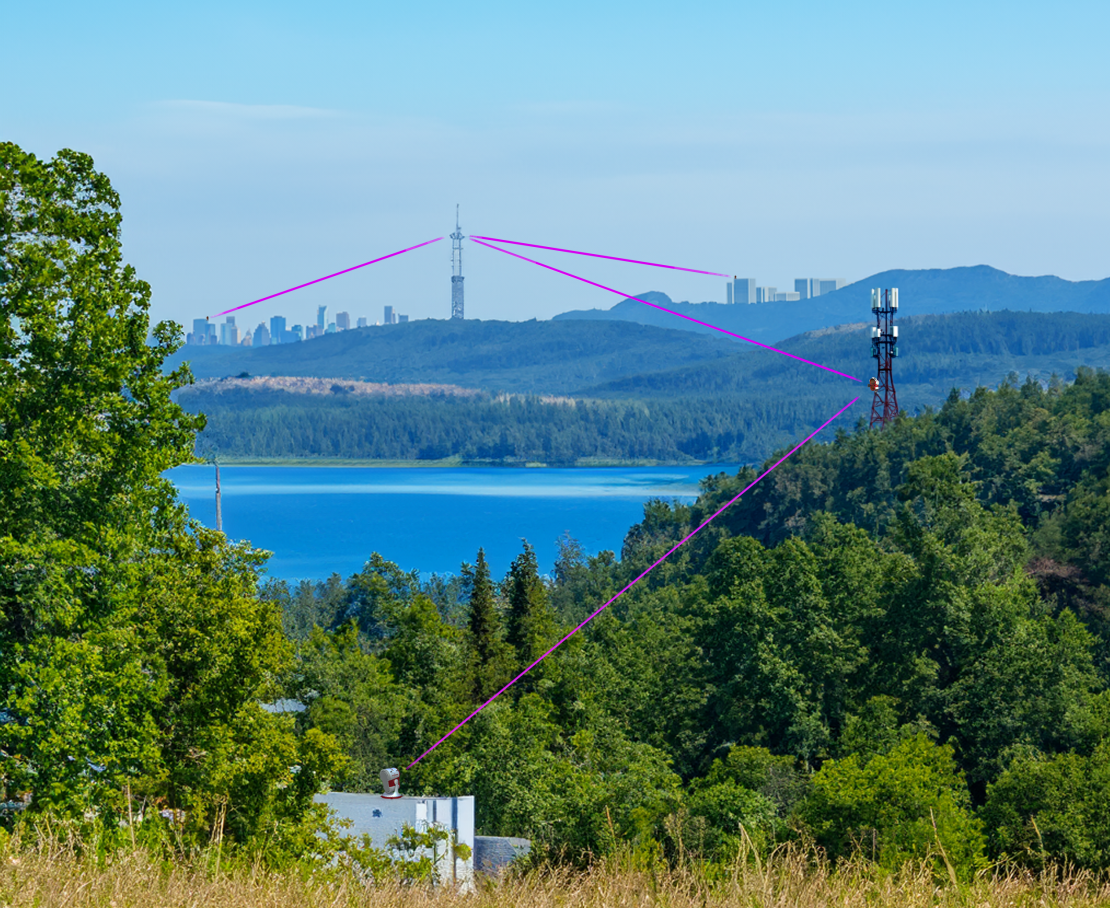In the internet industry, it’s known as the “last-mile” problem: Millions of people and businesses around the world aren’t able to access broadband because they’re missing the final leg of a broadband network, which connects the user to the backbone of the internet.
This critical infrastructure, ranging from a few hundred feet to a few miles, can often be too expensive or difficult to build, because of challenges with the terrain or because it would serve too few users — issues that are a bigger problem in rural and remote areas.
One solution could come from a technology called “free-space optics” (FSO), which uses lasers to transfer data through the air. It was pioneered in the 1960s by NASA and for decades has been a potential game-changer for internet infrastructure.
However, the technology has always faced an unavoidable obstacle: weather. Fog and rain, but even simple air turbulence, are enough to disrupt the signal, which also requires a stable, direct line of sight between transmitter and receiver. So, despite the advantage of not requiring any licensing or regulation, unlike radio signals such as 5G, FSO broadband has yet to materialize as a commercial reality.
Now, Virginia-based company Attochron says it’s ready to launch its own version of it — after more than 20 years of development.
Through fog and rain
Attochron, which completed a $15 million funding round in July, says it has begun low-rate production of its main hardware product, called ALTIS-7, which includes a receiver and a transmitter and looks vaguely like a security camera. The company plans to ramp up production early next year in preparation for a commercial launch.
To demonstrate the technology, Attochron partnered with telecom company Lumen and an unnamed Fortune 200 retailer, for a three-month “proof of concept.” The laser link stretched over 1.5 miles at a speed of 1.25 Gigabits per second, and the company says it has achieved a top speed of just over 10 Gigabits, which is on par with the fastest fiber-optic business connectivity.
But it’s been a long time coming. Founded in 2002, Attochron has yet to release any products or services, something CEO Tom Chaffee calls “a great example of believing in a great idea whose time has yet to come.” After receiving angel funding in 2004, Chaffee says, things slowed down because of the dot com crash hangover, and the company was kept afloat by friends and family.
“This modest level of funding, sometimes only $50K or $100K for an entire year, had to pay for everything: personnel, consultants, hardware for test and measurement,” he recalls. “This situation lasted for 10 years, until the first private equity funding, and while painful, it allowed Attochron to build a solid foundation in understanding (FSO) physics and build a team of those not deterred by the long road.”
In 2012, Chaffee moved the company to its current base of Lexington, Virginia, which can experience heavy fog and other problematic weather for FSO. “We have extremes in wind speed and in rainfall. But I do want to stress that, believe it or not, a beautiful, clear air day is one of the most difficult times to propagate a laser,” he said.
As the laser is traveling through the air, Chaffee explains, slight changes in temperature or moisture affect the beam. Attochron’s technology, in simple terms, introduces two innovations compared to previous attempts to transfer data using lasers: it uses extremely short pulses of light, rather than a continuous beam, and it employs a broad spectrum of light rather than a narrow one, which allows the signal to achieve a much higher stability.
“That is Attochron’s big breakthrough,” Chaffee said. “We have somewhere in the neighborhood of 60 or 70 granted patents and about 200 more pending.”
Attochron is trying to succeed where others have failed. In the early 2000s, a company called Terabeam made headlines with its plan to bring a very similar technology to the market, but it never succeeded. However, Google’s parent company Alphabet says it has already deployed hundreds of laser-based terrestrial broadband links through a project called Taara, which focuses on end users in rural areas in a dozen countries including India, Kenya and Fiji.
Enabling, not replacing
According to Chaffee, the advantages of bridging the last mile with lasers are many, starting with the fact that it’s comparatively cheaper than laying fiber optics cables. A typical Attochron hardware package will cost $30,000 for a 10 Gigabit link, whereas fiber cable infrastructure can cost between $250,000 and $1 million for a dedicated connection, he says, on top of requiring lengthy permission processes.
Provided that line of sight is preserved (Chaffee says the system could be placed on a cell phone tower to help with that), Attochron transmitters do not require any regulatory process prior to installation. They can also be deployed in “hours rather than months or longer,” Chaffee said.

Ten Gigabit connectivity for $30,000 is beyond the needs and means of most people, which is why businesses are the target market. Attochron will sell the links to broadband providers and carriers who will install them and charge a monthly fee to a business that wants to use them.
The company is looking beyond last-mile corporate connectivity, too, citing uses in the military sector — a signal sent only between transmitter and receiver is secure, if the data is only in the lasers — or cases where radio capacity is limited due to a crowded radio spectrum, such as near airports.
It remains to be seen if the technology is worth the wait, but experts say it has potential.
According to Hazem Refai, the Williams Chair of Telecommunication and Networking at the University of Oklahoma, who’s not involved with Attochron, there are advantages to using FSO. “You don’t need FCC licensing for it,” he said. “You just can put a transmitter and a receiver and shoot a laser between the two, and all you need to have is a direct line of sight.” He adds that on paper, Attochron’s technology offers “high improvement on the current technologies,” and if realized, it would be a “very good achievement.”
James Osborn, a professor in the Department of Physics at Durham University, in the UK, who’s also not involved with Attochron, says the company’s technology seems sound on paper, although technical challenges remain due to the fact that the laser pulses it uses are very fast – a million times shorter than a nanosecond.
He questions whether the technology might be too complicated for the purpose it serves, and believes that there are limits with the speeds that it can achieve. However, he adds, it has advantages for data security and it can be more than useful to bridge the last mile. “This is worth monitoring, to see where it gets to,” he said.
Chaffee makes clear that Attochron is not trying to supplant current technologies. “Some FSO companies are proposing that they can replace fiber. We are not saying that — we’re saying we are complementary,” he said. “It’s really an enabling technology, not a replacement technology.”
This story has been updated to reflect that Taara is available commercially.










